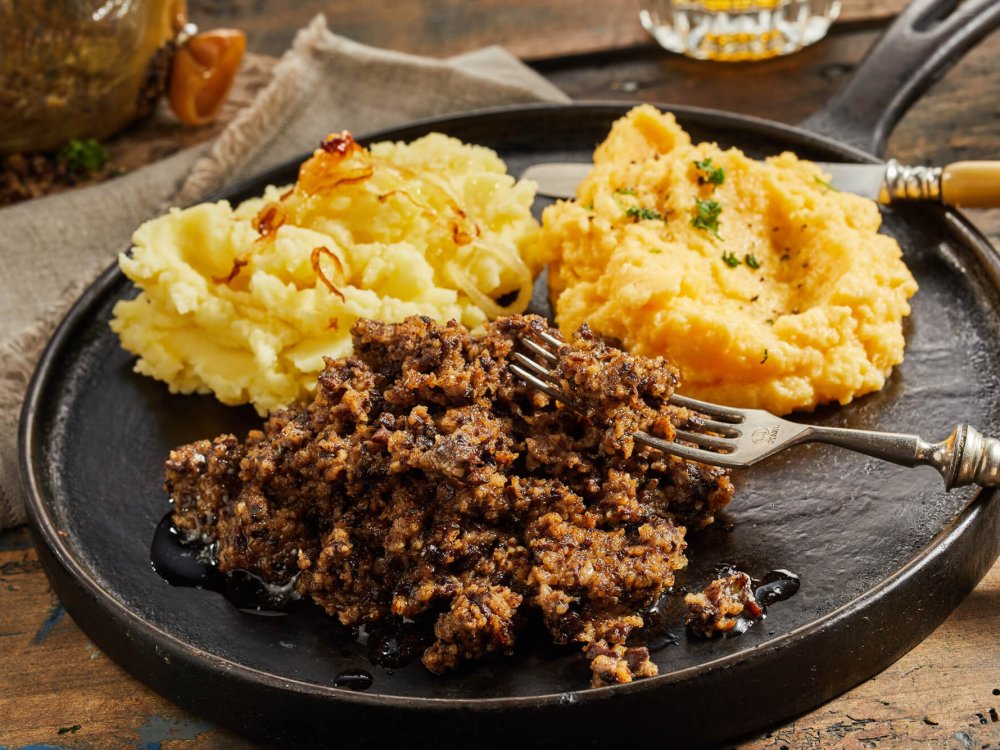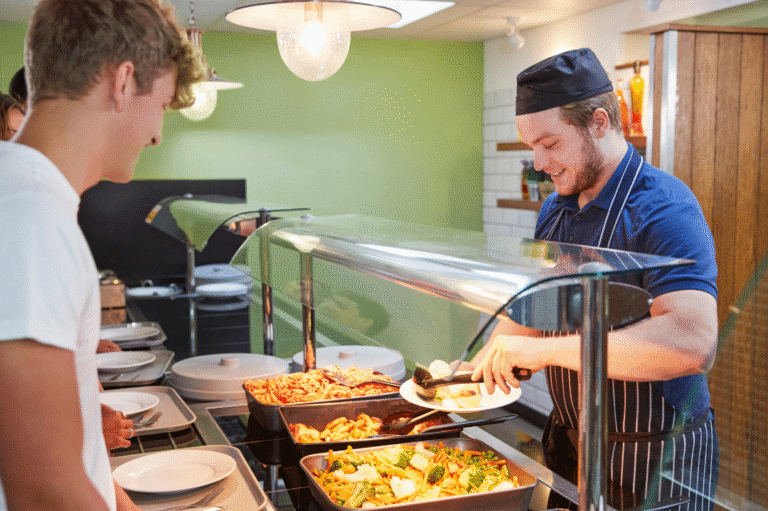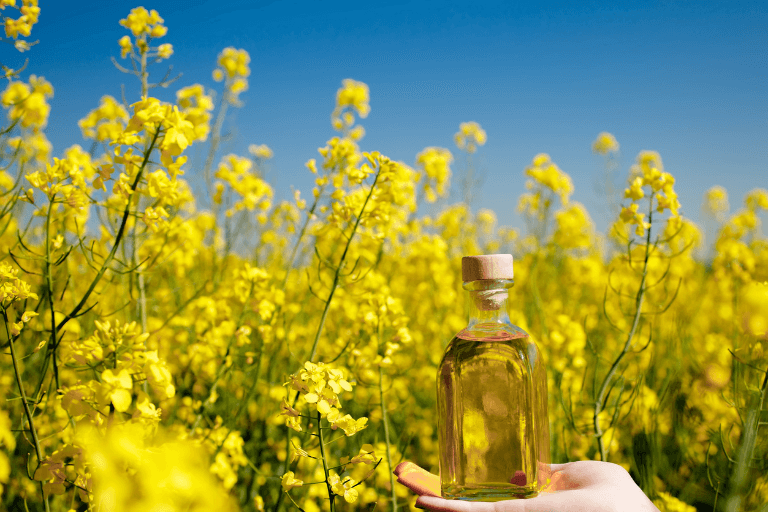First of all, what is haggis?
Haggis is traditionally made with sheep’s heart, liver and lungs, minced with onions, oatmeal, suet, salt and spices. There’s a few theories regarding the origins of the haggis. One is that it was first made for the old Scottish cattle drovers, when the men would leave the Highlands to drive their cattle to market in Edinburgh and the women would prepare a ‘ready meal’ for them to eat on the long journey through the glens.
Another theory is that it originates in pre-historic times as a way of cooking and preserving offal that would otherwise quickly spoil following a hunt. The offal was stuffed inside the stomach and the bundle was boiled for an hour or so. A whole meal in one tidy bundle – no washing up!
The Scottish poet, Robert (or Rabbie) Burns wrote ‘Address to a haggis’, a poem that is now recited at most Burns suppers. On the 25th January, his birthday is celebrated with Burns suppers across Scotland and in many other countries. The main dish is haggis served with neeps and tatties (turnips and potatoes). With many people in January aiming to get back in shape after the festive period, how healthy is a Burns supper?
The Haggis
One of the main ingredients of haggis is liver, which is high in vitamin A, vitamin B12 and folate. Heart and lungs will provide some iron, zinc and selenium and the oats included in haggis will contribute to fibre intake. It’s important not to over indulge in haggis as it tends to be high in fat and saturated fat as well as high in salt, so be mindful of the portion size. A vegetarian haggis is likely to be lower in calories, fat and saturated fat compared with a traditional haggis, with ingredients generally including oats, lentils, beans and a variety of vegetables and seeds. Both traditional and vegetarian haggis are packed with flavour!
Neeps
Mashed neeps (turnips) provide some vitamin C, potassium and fibre and are only around 40 calories (177kJ) per 100g. A nice portion size is probably around 200g of mash.
Tatties
Mashed tatties (potatoes) provide potassium, magnesium, folate, vitamin C and vitamin B6 as well as dietary fibre. They are great at increasing the nutrient density of a meal by providing a relatively high micronutrient contribution, compared with energy content (100g of tatties mashed with some butter provides 102 calories (430kJ)).
A Burn’s supper has many nutritional benefits, but be mindful of the portion size of haggis due to the high fat, saturated fat and salt content.
Happy Birthday to Rabbie Burns!
To learn more haggis facts and how its made, listen to my Food Connections podcast episode with James Macsween, Managing Director of Macsween of Edinburgh.





